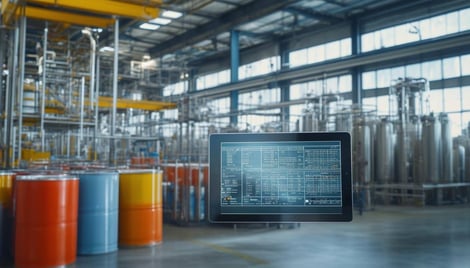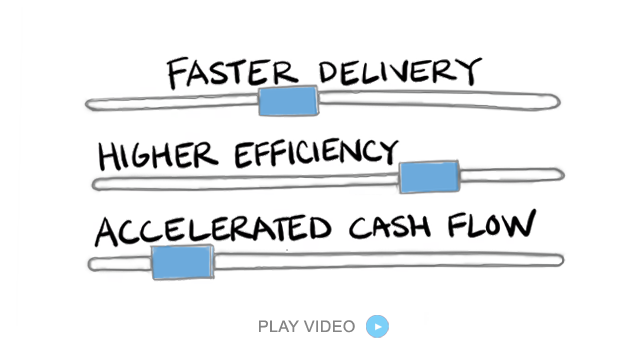
Minimizing Inventory Holding Costs in Chemical Manufacturing: A Strategic Approach with PlanetTogether and ERP Integration
For Production Schedulers in chemical manufacturing, inventory holding costs represent a significant portion of operational expenses. These costs are often compounded by the complexity of chemical inventory, which includes raw materials, intermediates, and finished goods with specific handling, storage, and regulatory requirements. Balancing cost efficiency while ensuring uninterrupted production requires strategic planning and the right tools.
The integration of advanced planning and scheduling (APS) tools like PlanetTogether with robust ERP systems such as SAP, Oracle, Microsoft Dynamics, Kinaxis, or Aveva can provide transformative capabilities.
This blog explores strategies to minimize inventory holding costs and highlights how integrated technologies empower Production Schedulers to optimize inventory management.

Understanding Inventory Holding Costs
Inventory holding costs include:
Storage Costs: Expenses related to warehousing, temperature control, and specialized equipment for handling hazardous chemicals.
Capital Costs: The cost of capital tied up in inventory that could otherwise be invested elsewhere.
Obsolescence Costs: Losses due to chemical expiration, degradation, or changes in market demand.
Insurance and Taxes: Costs associated with insuring inventory and paying inventory-related taxes.
For chemical manufacturers, managing these costs is not only a financial imperative but also a key driver of competitive advantage. Excess inventory can erode profit margins, while inadequate inventory risks production disruptions and missed customer commitments.

Key Strategies to Minimize Inventory Holding Costs
Implement Just-in-Time (JIT) Principles
By producing or procuring materials only as needed, JIT minimizes excess inventory. However, achieving JIT requires precise scheduling and coordination across the supply chain.
Integration Advantage: By integrating PlanetTogether with ERP systems like SAP or Microsoft Dynamics, Production Schedulers gain real-time visibility into inventory levels and production schedules. Automated alerts for low inventory and real-time updates ensure materials are replenished just in time without overstocking.
Optimize Safety Stock Levels
Safety stock protects against uncertainties in demand and supply but holding excessive safety stock inflates costs.
How Technology Helps: With PlanetTogether’s advanced algorithms, Production Schedulers can calculate optimal safety stock levels based on historical data and demand forecasts from systems like Kinaxis. This ensures inventory buffers are sufficient without being excessive.
Enhance Demand Forecasting
Accurate demand forecasting reduces the risk of overproduction and overstocking. Leveraging historical sales data, market trends, and customer insights is crucial.
Technology in Action: Integration between PlanetTogether and Oracle ERP allows seamless sharing of demand forecasts. Production schedules can be dynamically adjusted to align with forecasted demand, reducing inventory waste and improving responsiveness.
Improve Inventory Turnover Rates
Higher inventory turnover rates indicate efficient use of inventory. Low turnover often signals overproduction or poor demand alignment.
Integrated Benefits: With the combined power of PlanetTogether and Aveva, Production Schedulers can track real-time inventory turnover metrics and align production plans to boost efficiency. This minimizes storage durations for raw materials and finished goods.
Optimize Production Batches
Batch sizes significantly influence inventory levels. Large batches may lower production costs but can lead to excessive inventory. Conversely, small batches increase setup times and costs.
Solution: PlanetTogether’s scheduling features, when paired with ERP systems, help optimize batch sizes based on demand patterns, production constraints, and storage capacities. This balance reduces unnecessary inventory buildup.
Enhance Collaboration Across Departments
Efficient inventory management relies on alignment between production, procurement, and sales teams. Poor communication can lead to mismatches in production and demand.
How Integration Solves This: PlanetTogether integrates with platforms like SAP or Microsoft Dynamics to provide a unified view of production plans, inventory levels, and sales forecasts. This fosters collaboration, ensuring all departments work from the same data.

Real-World Benefits of Integration
Integrating PlanetTogether with an ERP system offers several tangible benefits for chemical manufacturing:
Real-Time Inventory Tracking
PlanetTogether’s integration with SAP allows real-time tracking of raw materials, intermediates, and finished goods. Production Schedulers can make informed decisions about when to reorder or adjust production.
Regulatory Compliance
Chemical manufacturing must adhere to strict regulations. Integration with Aveva ensures that inventory management aligns with safety and compliance standards, reducing the risk of penalties and recalls.
Cost Savings
Oracle ERP integration streamlines procurement and inventory management processes. Automated reorder points and demand-driven replenishment reduce holding costs.
Enhanced Data Analytics
With Microsoft Dynamics, Production Schedulers can leverage advanced analytics to identify inventory trends and areas for improvement. Dashboards provide actionable insights for better decision-making.
Increased Agility
By integrating with Kinaxis, schedulers gain the ability to simulate “what-if” scenarios. This is invaluable for planning inventory adjustments in response to market changes or supply chain disruptions.
For Production Schedulers in chemical manufacturing, minimizing inventory holding costs is both an art and a science. Leveraging advanced tools like PlanetTogether, integrated with ERP systems such as SAP, Oracle, Microsoft Dynamics, Kinaxis, or Aveva, provides a powerful solution. These technologies enable real-time visibility, optimized scheduling, and data-driven decision-making, ensuring inventory levels are carefully balanced to minimize costs while meeting production and customer demands.
By adopting these strategies and technologies, chemical manufacturers can achieve significant cost savings, improved operational efficiency, and a competitive edge in a demanding industry.
Are you ready to take your manufacturing operations to the next level? Contact us today to learn more about how PlanetTogether can help you achieve your goals and drive success in your industry.
























LEAVE A COMMENT